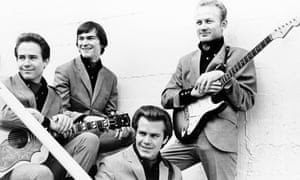Dale Evans Rogers (born Lucille Wood Smith; October 31,
1912 – February 7, 2001) was an American actress, singer, and songwriter. She
was the third wife of singing cowboy Roy Rogers.
Dale Evans was born Lucille Wood Smith on October 31,
1912 in Uvalde, Texas, the daughter of T. Hillman Smith and Bettie Sue Wood.
She had a tumultuous early life. Her name was changed to
Frances Octavia Smith
while she was still an infant. She spent a lot of time living with her uncle,
Dr. L.D. Massey, an internal medicine physician, in Osceola, Arkansas.
At age 14, she eloped with and married Thomas F. Fox,
with whom she had one son, Thomas F. Fox, Jr., when she was 15. A year later,
abandoned by her husband, she found herself in Memphis, Tennessee, a single
parent, pursuing a career in music. She landed a job with local radio stations
(WMC and WREC), singing and playing piano. Divorced in 1929, she took the name
Dale Evans in the early 1930s to promote her singing career.
After beginning her career singing at the radio station
where she was employed as a secretary, Evans had a productive career as a jazz,
swing, and big band singer that led to a screen test and contract with 20th
Century Fox studios. She gained exposure on radio as the featured singer for a
time on the Edgar Bergen/Charlie McCarthy show.
Throughout this early period, Evans went through two
additional failed marriages, the first of which was to August Wayne Johns from
1929 to 1935. In 1937, she married her third husband, accompanist and arranger
Robert Dale Butts; they divorced nine years later. During her time at 20th
Century Fox, the studio promoted her as the unmarried supporter of her teenage
"brother" Tommy (actually her son Tom Fox, Jr.). This deception
continued through her divorce from Butts in 1946 and her development as a
cowgirl co-star to Roy Rogers at Republic Studios.
Evans married Roy Rogers on New Year's Eve 1947 at the
Flying L Ranch in Davis, Oklahoma, where they had earlier filmed the movie Home
in Oklahoma. Art and Mary Jo Rush were best man and matron of honour. The
marriage was Rogers' third and Evans' fourth but was successful; the two were a
team on- and off-screen from 1946 until Rogers' death in 1998. Shortly after
the wedding, Evans ended the deception regarding her son, Tommy. Roy had an
adopted child, Cheryl, and two biological children, Linda and Roy (Dusty) Jr.,
from his second marriage.
Together they had one child, Robin Elizabeth, who died of
complications of Down syndrome shortly before her second birthday. Her life
inspired Evans to write her bestseller Angel Unaware. Evans was very
influential in changing public perceptions of children with developmental
disabilities and served as a role model for many parents. After she wrote Angel
Unaware, a group then known as the “Oklahoma County Council for Mentally
Retarded Children” adopted its better-known name Dale Rogers Training Centre in
her honour.
 From 1951-57, Evans and Rogers starred in the highly
successful television series The Roy Rogers Show, in which they continued their
cowboy and cowgirl roles, with her riding her trusty buckskin horse,
Buttermilk. Alice Van-Springsteen served as a double for both Evans and Gail
Davis, the actress who starred in the syndicated series Annie Oakley, often
performing such tasks as tipping over wagons and jumping railroad tracks.
From 1951-57, Evans and Rogers starred in the highly
successful television series The Roy Rogers Show, in which they continued their
cowboy and cowgirl roles, with her riding her trusty buckskin horse,
Buttermilk. Alice Van-Springsteen served as a double for both Evans and Gail
Davis, the actress who starred in the syndicated series Annie Oakley, often
performing such tasks as tipping over wagons and jumping railroad tracks. In addition to her successful TV shows, more than 30 films and some 200 songs, Evans wrote the well-known song "Happy Trails". In late 1962, the couple co-hosted a comedy-western-variety program, The Roy Rogers and Dale Evans Show, which aired on ABC. It was cancelled after three months, losing in the ratings to the first season of The Jackie Gleason Show
Full retirement proved elusive for Dale. She continued as
a bestselling author and had a weekly television show 'A Date With Dale' for
the Trinity Broadcast Network. The couple's headquarters became the The Roy
Rogers-Dale Evans Museum in Victorville, California near their Happy Valley
home which chronicled their lives. She and her husband routinely greeted fans
at their museum.
For her contribution to radio, Dale Evans has a star on
the Hollywood Walk of Fame at 6638 Hollywood Blvd. She received a second star
at 1737 Vine St. for her contribution to the television industry. In 1976, she
was inducted into the Western Performers Hall of Fame at the National Cowboy
& Western Heritage Museum in Oklahoma City, Oklahoma. In 1995, she was
inducted into the National Cowgirl Museum and Hall of Fame in Fort Worth,
Texas. In 1997, she was inducted into the Texas Trail of Fame. She ranked No.
34 on CMT's 40 Greatest Women in Country Music in 2002.
Evans died of congestive heart failure on February 7,
2001, at the age of 88, in Apple Valley, California. She is interred at Sunset
Hills Memorial Park in Apple Valley, next to Rogers. Following Dale's death,
the Roy Rogers and Dale Evans Museum moved to Branson, Missouri.
(Edited mainly from Wikipedia)



















































